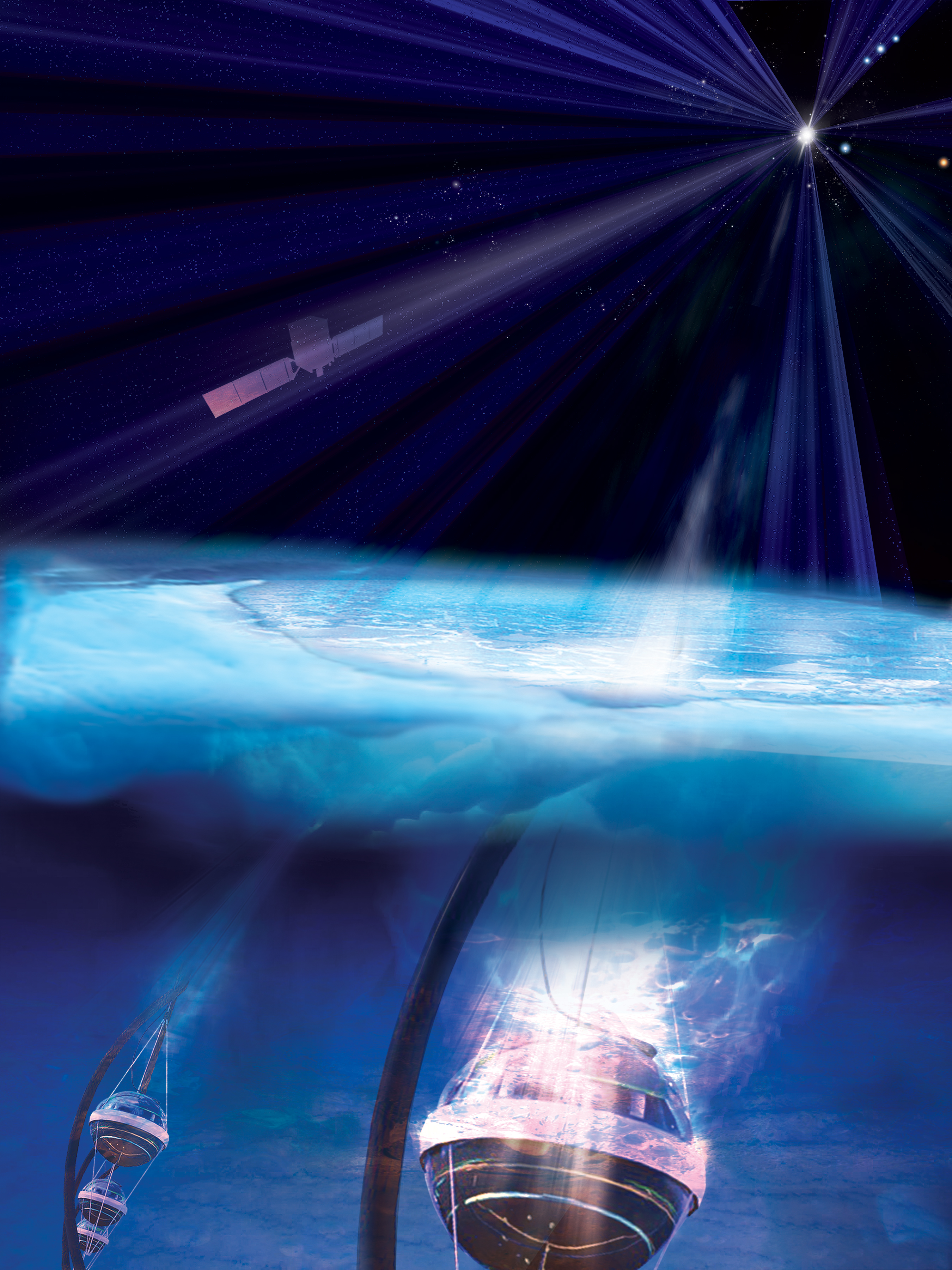
Overview
What are the physical processes at work in AGN and the particle content of their jets? What fraction of cosmic rays may be ultimately linked to AGN? These are the compelling questions of the astroparticle multimessenger field that have always fascinated me and on which I have focused my efforts as a scientist. On the one hand blazars, our Universe’ "monsters", on the other hand the unpredictable, transient and variable high-energy domain.
To pursue my research, I take advantage of observations throughout the whole electromagnetic spectrum thanks to a close collaboration with international multi-wavelength groups. As new means became available e.g., astrophysical neutrinos and gravitational waves, I have learned how to exploit them, using the synergy of electromagnetic data and multimessenger observations in combination with the time-domain information to pinpoint out Universe's cosmic ray accelerators.
This investigative approach has demonstrated to be a promising path. In these years I had the privilege of playing a major role in breakthrough results in vibrant areas of astrophysics, i.e. neutrinos and gravitational waves. I have led projects that significantly helped providing clues on the extraterrestrial neutrino origin, and the analysis tools that I developed are being used for the quest of electromagnetic counterparts of cosmic neutrinos.
Research Interests
My group interest spans a broad range of astrophysical topics, at a glance:
Cosmic Particle Accelerators
Cosmic rays are charged subatomic particles that hit Earth from deep in outer space. They can be extraordinarily powerful, and reach energies up to 100 million times greater than any attained by human-made particle collider. The same sources from which these highly energetic cosmic rays originate are thought to produce other types of particles: neutrinos and gamma-rays. Neutrinos and gamma-rays are neutral and can travel unimpeded throughout space. As a matter of fact, while cosmic rays are deflected, these two messengers point straight back to their origin and can be used to trace the intergalactic pace back, revealing their emitter. Our group explots the synergy of Fermi-LAT γ-ray data and neutrino observations to pinpoint the sources of cosmic rays, and gain insights about the physical mechanisms acting in those sources.
Origin of Cosmic Neutrinos
Neutrinos are nearly massless, ghostly particles that rarely interact with matter. As such, they are very challenging to detect and only few times they get captured in the world’s largest neutrino detector, i.e. the IceCube Observatory. IceCube consists of an array of thousands of sensors buried in the Antarctic ice, encompassing a cubic kilometer volume at the South Pole. The detection by IceCube of an astrophysical neutrino flux in the 10 TeV to 10 PeV energy range opened a new window to the high-energy Universe. Despite the notable step forward the origin of these neutrinos remains a mystery. No neutrino point-source has been confidently detected so far and the isotropic sky distribution of IceCube neutrinos points to a dominant extragalactic origin.
Since it became operational in 2010, IceCube has captured only few hundreds of likely-astrophysical neutrinos (i.e. high-energy neutrinos, with energies >TeV). None of those has been capable of providing incontrovertible evidence about their astrophysical origin. Nevertheless, an encouraging step forward was made in 2017 with the identification of a flaring gamma-ray blazar as the first, most promising extragalactic neutrino point-source. Read more in NASA's press release: NASA’s Fermi Traces Source of Cosmic Neutrino to Monster Black HoleGamma-ray astronomy with Fermi-LAT
Gamma rays are the most energetic form of light and can be studied with the Large Area Telescope (LAT), onboard Fermi Gamma-ray Space Telescope space observatory. The Fermi satellite was launched by NASA in 2008 and is in a low Earth orbit. The LAT has the capability to monitor gamma rays from the entire sky in just three hours. Its capability to continuously observe the whole high-energy (MeV-GeV) sky has enabled us with unprecedented sensitivity to search for variable and transient behavior from both previously known and unknown gamma-ray sources. The Fermi catalogues host several thousands of objects, the overwhelming majority of which belong to a special type of Active Galaxies, dubbed blazars. Blazars are among the brightest electromagnetic objects hosted in our Universe, and the most powerful, persistent sources. They release the majority of their energy in the gamma-ray energy band and their electromagnetic emission can be variable on different timescale: it can persist over years, or last fractions of seconds.
COSI : a forthcoming revolution in the soft gamma-ray regime
The Compton Spectrometer and Imager (COSI) is a soft gamma-ray survey telescope (0.2-5 MeV) designed to probe the origins of Galactic positrons, uncover the sites of nucleosynthesis in the Galaxy, perform pioneering studies of gamma-ray polarization, and find counterparts to multi-messenger sources. The COSI Small Explorer NASA satellite is currently planned for launch in 2027. See NASA’s Explorers website for more on the Explorers program and COSI.
My favourite telescopes
- Fermi Gamma-ray Space Telescope Large Area Telescope (LAT)
- COSI NASA’s Explorers website
- Neil Gehrels Swift Observatory
- IceCube South Pole Neutrino Observatory
- Antares Km3Net Neutrino Telescope in the Mediterranean sea
Image
NASA's Fermi (top left) has achieved a breakthrough result identifying a monster black hole in a far-off galaxy as the source of a high-energy neutrino seen by the IceCube Neutrino Observatory (sensor strings, bottom). Credits: NASA/Fermi and Aurore Simonnet, Sonoma State University.